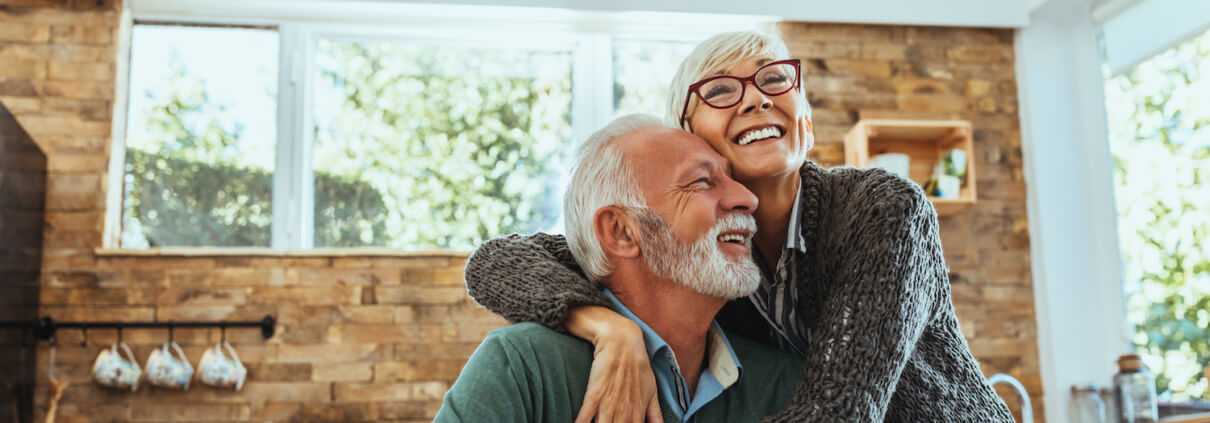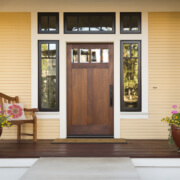Is Your Home Ready to Age With You?
AgeAssured Ally Angelina Portuense has worked with many of our members to optimize their homes for successful aging. Here are some of her best tips!
********
Let’s face it: as we get older, the choices we made when buying or designing a home years ago may no longer work as well. For example, bathtubs are harder to get in and out of than showers. Doorways might be too narrow for walkers and wheelchairs. In this essay, I will walk you through a typical home and review some of our AgeAssured Allies’ best tips to make it as safe and accessible as possible.
A Smooth Entrance
Front steps: If you have any front steps, make sure that they are in good condition (i.e. uncracked concrete or solid wood) and have handrails on both sides. Handrails should extend beyond the bottom and top of the stairs to provide support for their entire length. If stairs become a challenge, consider installing an metal ramp certified by the ADA (Americans with Disability Act) with a licensed contractor or a Certified Aging in Place Specialist (CAPS).
Doorways: At the entrance (and around any doorway in your home), ensure that there is enough clearance for ambulatory assistive devices (such as a walkers, wheelchairs or rollators) in case you ever need one or are already using one; a minimum of 36 inches in width is ideal. Make sure that your entryway is well lit at night and that any welcome mats are secured to the floor properly to avoid becoming a tripping hazard.
Age-Friendly Kitchens
The kitchen is often the heart of a home, the place where meals come alive, delicious smells waft, and creativity either soars or plummets. Whether you enjoy cooking or have a love-hate relationship with it, being able to prepare your own meals is a big part of aging successfully. Happily, there are steps you can take to make your kitchen more age-friendly.
Countertops and Shelves: Keep them free from clutter, especially those close to the stove. When it comes to where to store things, put the items that you use on a daily/frequent basis at arms-reach when standing at the counter. Invest in a sturdy step stool to reach things on top shelves, ideally, one with a handrail and non-skid rubber for your feet.
Kitchen Tools: Switch to more ergonomic utensils and tools and consider soft-grip bowls and shears. Many older adults like rocker knives, which allow you to cut vegetables and fruit on a cutting board with one hand. An electric can opener might be another wise investment.
Safer Bathrooms
Designing safe and sturdy transitions in bathrooms are key to making them age-friendly. Is there enough space for you to transition from sink to shower or shower to toilet? If space is an issue, think about installing grab bars, which take up hardly any room. If space is not an issue or permanent grab bar placement is not possible or desirable, explore durable medical equipment that can help with challenging transitions. For example, if you have a large tub wall that requires you to step over it in order to enter the bath or shower, consider a shower transfer bench that you can sit on and slide off of to get over the tub barrier. If getting off the toilet is becoming more difficult, consider a raised toilet seat with arms. Since bathrooms floors can be slippery when wet, consider installing non-stick tape in and outside of the shower as well as non-slip shower mats.
Well-Equipped Bedrooms
Navigating dark hallways and stairwells in the middle of the night is not ideal at any age. Not only are our eyes not fully adjusted after waking, but our movements can be slower than normal. So make sure all of your hallways are well-lit and cleared of clutter, especially any hallways going from your bedroom to the bathroom. Light switches should be conveniently located, i.e. at the entry to the hall from the bedroom). Consider battery-operated motion sensor night lights.
Be mindful of how “slippery” your comforter and sheet sets are. As a geriatric case manager, I have lost count of how many stories I’ve heard from clients who have fallen out of their beds because their covers were too slippery!
Next, think about how your furniture is arranged. Is there ample space around doorways? A clear passage from the bed to the bathroom or hallway? If getting on or off the bed is becoming a challenge, consider a bed grab bar that can help you pull yourself up and out. Access to a phone in the middle of the night is also important; make sure there is a place close to the bed where a phone can be securely held and charged. Alight should be easily reached and switched on from the bed, too.
Easy Living Rooms
Living rooms often need to be re-configured as we age to facilitate cleaning and to prevent falls. Examine critically whether you need all of your furniture and knick knacks. Area rugs should be securely fastened to the floor to avoid being a tripping hazard. Electrical cords should be secured to the wall or away from any foot traffic and coiled to remove any slack. Consider anything you can do to make the living room easier to clean, such as de-cluttering, installing hardwood floors versus carpet, or replacing horizontal blinds with vertical ones for easier dusting.
At Assured Allies, we fully support your desire to age happily in the place you call home. I hope these tips have been helpful. We have plenty more! We’d also love to hear what works for you so we can share your tips with other members. Please reach out to us anytime at [email protected] or call us at (866) 727-7833.



 Shuuterstock
Shuuterstock




